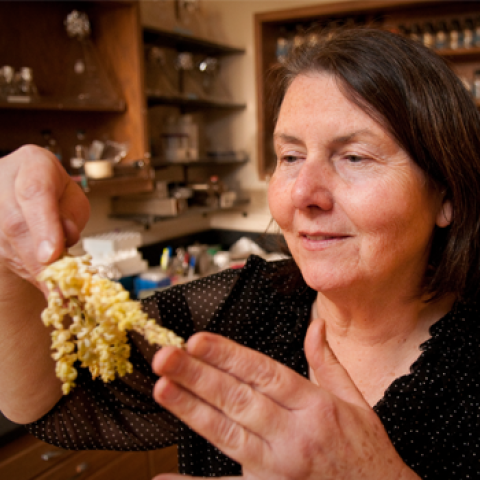Interdisciplinary Initiatives Program Round 6 - 2012
Wolf B. Frommer, Biology
Virginia Walbot, Biology
Alexander Dunn, Chemical Engineering
Pathogens attack their hosts in order to reproduce. A key prerequisite for efficient reproduction of microoganisms such as pathogenic bacteria and fungi is to gain access to the host's nutrient resources. The pathogens typically use transporters in their membranes to acquire nutrients such as carbon, nitrogen etc. Recent findings in the Frommer lab show that pathogens also manipulate the host's metabolism; specifically they force infected cells to provide sugars to the pathogen by inducing sugar transporters (SWEETs) in their vicinity. While the induction of the transporter genes, the function of the SWEETs, and their necessity for successful infection by bacteria has been demonstrated, it will be key to prove whether sugars actually leak out of cells, and whether the pathogens acquire these sugars, or whether alternative mechanisms are involved in the pathogen-host interaction. The Frommer lab pioneered the development of Foerster Resonance Energy Transfer (FRET) sensors for monitoring metabolites in live cells with exceptionally high temporal and spatial resolution, e.g. to monitor glutamate release from hippocampal neurons. FRET imaging in intact organisms, typically performed by using ratiometric analysis tools, would benefit from improved methods such as Fluorescence Lifetime Imaging of FRET. The Dunn Lab from the Chemical Engineering department has extensive experience in FLIM imaging and will help establish and perform the analyses. The Frommer lab will adapt the sensors for FLIM analyses and target them to the cell surface. The Walbot lab will implement the novel sensors in maize plants. This collaboration is critical because of the required experience with maize genetics, the infection process and the cancer-like tumor growth induced by the fungal pathogen Ustilago maydis. Transgenic plants expressing the sensors generated with the help of the Walbot lab will be used for the analyses. In addition, the Walbot and Frommer labs have established a close collaboration with the Kaemper lab (Germany) to introduce the sensors into Ustilago maydis in order to monitor sugar flux directly into hyphae during infection using Ustilago as a biosensor. The proposed project will provide the first proof of concept that FRET sensors can be used in intact leaves of plants to monitor host pathogen interchange of nutrients. The implementation of FLIM is expected to significantly improve the data from such an in vivo analysis. The project is expected to revolutionize our understanding of host pathogen interaction with relevance for plants, but also for the medical field.



